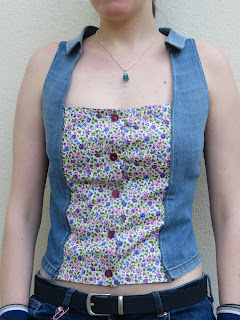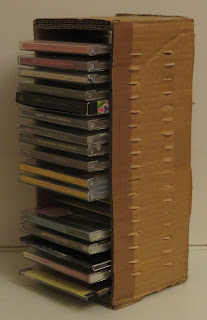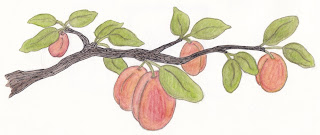Mostly for my own future reference, but also in case any of you are interested, here is a "how-to" for making the paper flowers that we tried on Monday.
First, you'll need 6 (we used 10cm x10cm) squares of decorative paper.
With your first square, lay it in front of you with the corners pointing towards and away from you. Make sure the side of the paper you want visible is facing down on the table.
Take the bottom corner and fold the paper to make it meet the top corner, so that you now have a triangle shaped piece with the folded edge along the bottom/nearest you.
Then take the left corner and fold it up to meet the top corner. Repeat with the right corner.
Unfold the last two folds so that you have a triangle again. This time fold the long folded edge up to the fold you just made/unfolded.
Then unfold these and open up the triangle a little. Re-fold this time changing the direction of the folds, so that you have 3 "kite" shapes next to each other.
Fold over the points of the left and right "kites" and (for a neat finish) tuck the points inside the big triangle.
Then fold the left and right "kites" in half, along the fold lines.
Placing the paper between your thumb and fingers, gently pull from the centre bottom to the top corner to give the paper a slight curve but be careful not to crease or fold this part. Use a very small amount of glue along the edge and gently hold the edges in place for a few seconds. Then leave to dry while you make the rest of the "petals".
Once you have all six petals, choose a straw to use as the stem. Heat a glue gun and use to attach the petals to the straw - try to get them as close as you can so that you can still get the last petal in.
Then if you want to, you can decorate your paper flower using glitter, gems etc. I wanted to keep mine fairly simple, so I used the glue gun to fill the top of the straw and attach a small blue gem to the centre.
I really enjoyed learning to make these paper flowers and can't wait to add to my collection!
Please leave a comment below if you have any questions, give this project a try or have a suggestion for a project I should try...

















































